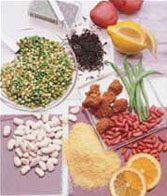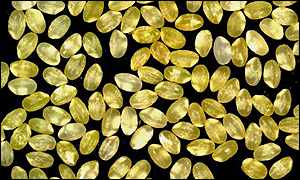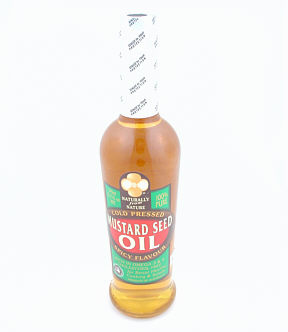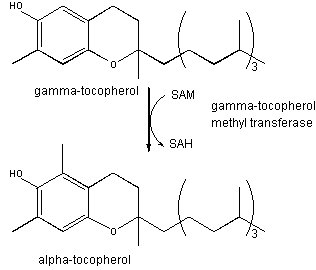Enhancing Vitamins and Minerals
Home _____ Benefits _____ Drawbacks _____ References
Enhancing Vitamins/Minerals ___ Reducing Undesirable Components ___ Modifying Macronutrient Compositions

permission pending from woman health club.com
Vitamin and mineral deficiencies lead to illness and death throughout the world. Much of the deficiencies that occur are caused by a lack of certain vitamins and minerals in the staple crops of undeveloped countries. Fortification and diet diversification, two methods of combating vitamin deficiency problems, are not possible in undeveloped countries. Undeveloped countries are unable to provide supplements to their citizens and most of the citizens dietray intake is unprocessed and therefore unfortified foods. Poor farmers in these countries are also unable to diversify their diets due to lack of ability to grow certain foods and lack of money to import diverse food items. By increasing the vitamin and mineral content of staple crops in undeveloped countries, scientist hope to increase the bioavailibity of vitamins and minerals. This page gives a few examples of the research that is currently underway in this field of genetically modifiend organisms.
High Carotene Mustard Seed Oil
Golden Rice
 Permission pending from BBC online news |
Each year vitamin A deficiency leads to blindness in 1/4 million people (Burkhardt et al., 1997). These deficiencies also lead to an increased susceptibility to childhood illnesses. Vitamin A deficiencies are widespread among undeveloped countries where rice, a vitamin A deficient food, is a staple food source (Burkhardt et al., 1997). An estimated 124 million children worldwide are affected by vitamin A deficiencies. In January 2000, Xudong Ye et al. published their research on high vitamin A rice. This research group sought to increase the levels of vitamin A in rice endosperm through the indcution of genes from the daffodil plant. Prior to transformation the rice was known to produce its own geranylgeranyl disphosphate, a precursor of beta carotene(vitamin A). Ye et al. inserted genes for each of the four enyzmes needed for to complete the biosynthetic pathway. Seeds from the transgenic plants appeared yellow in color, indicating carotenoid formation (Ye et al., 2000). The researchers named these seeds golden rice. The plants were phenotypically normal and fertile. Based upon their researcher Ye et al. indicated that consumption of golden rice would provide enough dietary vitamin A to overcome deficiencies in undeveloped countries. (Ye et al., 2000)
For more information on beta-carotene synthesis from geranylgeranyl disphosphate click here .
High Carotene Mustard Seed Oil
 Permission Pending from The Good Gourmet |
Following the creation of golden rice, researchers at Monsanto along with researchers from USAID, Michigan State University and Tata Energy research Institute in India sought to create high carotene mustard seed oil using genetic engineering approaches. In this project researchers worked to insert genes for enzymes along the biosynthetic pathway of beta carotene into canola (Brassica napus) plants. Upon insertion of these genes the canola plants show an increase in carotenoid concentrations. Mustard (Brassica juncea) is relative of canola which is grown in undeveloped countries including Nepal and Bangladesh. Mustard seed oil is also the second most consumed oil in India. Researchers are now attempting to insert the genes for enzymes along the beta carotene biosynthetic pathway into mustard plants. Upon its completion the oil from the mustard seed with contain adequate levels of vitamin A to decrease vitamin A deficiencies in India and other undeveloped countries (Mackay 2000).
In 2000 P. Lucca, R. Hurrell and I. Potrykus published their research on the "Genetic Engineering approaches to improve the bioavailability and the level of iron in rice grains"( Lucca et al, 2000). An improvement in the bioavailability of iron is needed due to the fact that Iron deficiency is the "most widespread micronutrient deficiency world-wide" (Lucca et al., 2000). Iron deficiencies lead to infant and mother mortality during childbirth, they cause decreased mental development in infants and a decrease immune function. The high level of iron deficiencies world wide is caused not only by a limited amount of available iron but also by the poor absorption of dietary iron. In developing countries primarily consume non-haem iron. This form of iron's absorption is inhibited by phytic acid, a substance found in grains and legumes. Non-haem iron absorption is enhanced by eating fruits vegetables and muscle tissue. In developing countries foods that increase iron absorption are not often readily available, while grains and legume constitute a large portion of their diet (Lucca et al., 2001).
Lucca et al. attempted to not only increase iron levels in rice, but also make it more readily absorbed in the body. They began by introducing a "ferritin gene from Phaselus vulagris into rice grains"(Lucca et al. 2000). Introduction of this gene doubled the iron content of these grains. In order to increase the bioavailability they inserted a thermotolerent phytase gene from Aspergillus fumigatus into rice endosperm. The phytase enzyme produced by this gene maintained its activity in stomach like conditions. The enzyme broke down phytic acids from the rice seeds. By lowering phytic acid levels the iron content of the rice could now be more readily absorbed. Finally, Lucca et al. overexpressed a gene causing an increase in a cysteine rich protein. This cysteine rich proteins mimic those found in muscle tissue. The cysteine residues enhance iron absorption(Lucca et al., 2001).
The plants created through these methods were phenotypically normal. The transgenic lines were crossed in an effort to create a plant with higher iron content and increased iron absorption. High iron rice may soon help solve the world-wide problem of iron deficiency (Lucca et al., 2001).
|
Agius et al. in the February 2003 edition of Nature Biotechnology discussed their research into crops with increased vitamin C levels. These researchers found that D-galacturonic acid acted as a precursor to L-galactono-1,4-lactone. L-galactono-1,4-lactone then acts as an intermediate in the biosynthesis of ascorbic acid. Agius et al. then overexpressed the strawberry gene GalUR in Arabidopsis thaliana. This gene encodes a D-galacturonic acid reductase which functions to convert D-galacturonic acid to L-galactono-1,4-lactone. Overexpression of this strawberry gene lead to a two to three fold increase in vitamin C levels in Arabidopsis plants. Their results indicate that the GalUR gene may be introduced into a variety of plants and increase the levels of vitamin C in the world's daily diet (Agius et al., 2003).
Eating levels of alpha-tocopherol (Vitamin E) above the U.S. recommended daily allowance leads to decreased risk of cardiovascular disease and cancer as well as enhances immune function. Most dietary vitamin E comes from plant oils. These oils generally contain low levels of alpha- tocopherol and high levels of its biosynthetic precursor gamma-tocopherol. In 1998 Shintani et al. cloned the last enzyme in the biosynthetic pathway between alpha and gamma-tocopherol. These researchers were then able to overexpress the gene for gamma-tocopherol methyltransferase in Arabidopsis plants. Upon overexpression of this gene the alpha-tocopherol content of these plants increased by nine-fold over the wildtype plants. Overexpression of this gene in plants such as canola could lead to an increase in the alpha-tocopherol levels in these plant oils. Consumption of these oils could lead to greater levels of vitamin E in our diets leading to greater health benefits (Shintani et al., 2003).
 |
Conversion of gamma-tocopherol to alpha tocopherol through gamma-tocopherol methyl transferase.
permission pending from "Getting More Vitamin E from Gamma-Tocopherol"
